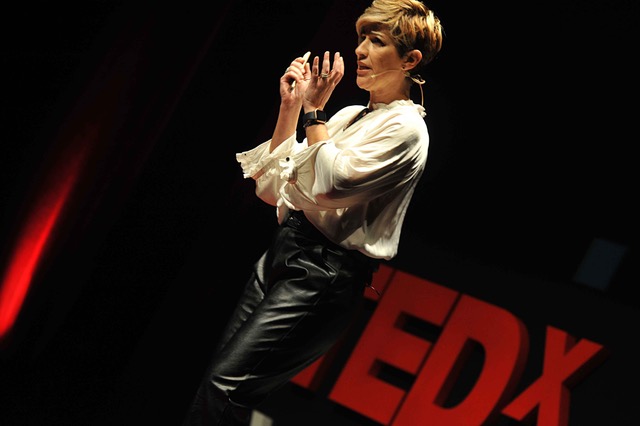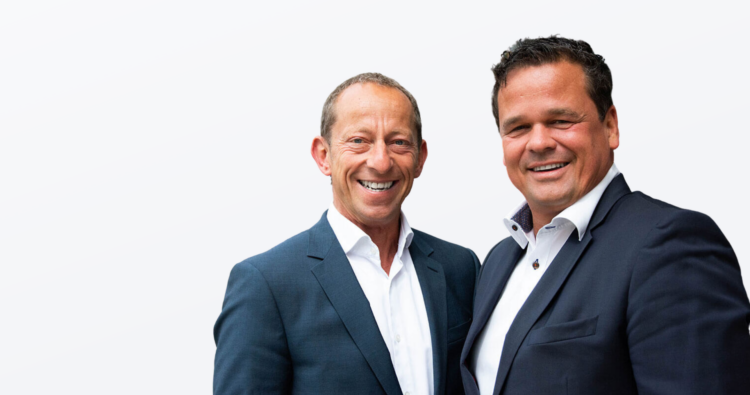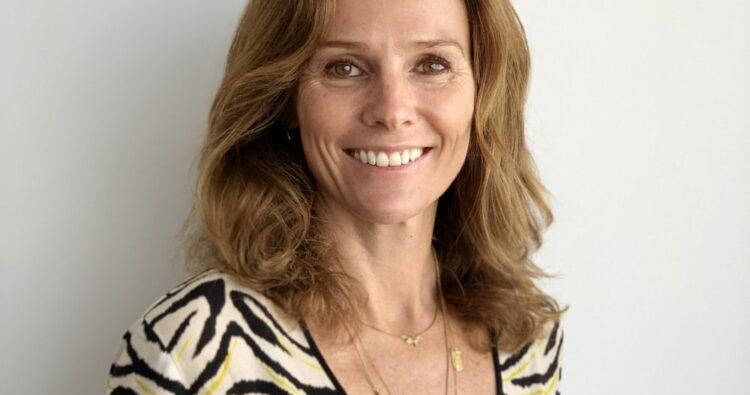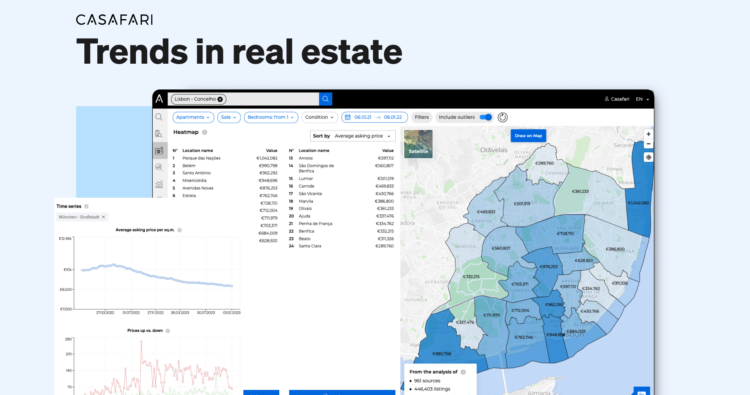Speaker, consultant and coach, Carla Carvalho Dias talks to us about what is behind serving well. Do we all want the same in the company-client relationship? How can we serve better?
In this conversation we unveil what the specialist thinks about relationships with digital in between and how this influences the positive impact on the relationship between teams and clients.
Join us on this journey to understand the mechanics of relationships.
A good “customer journey” starts with preparation?
I don’t know if it starts, but it depends a lot on preparation. A good customer journey lives on details, customization and humanization, so the more you prepare, the better. Both from a personal point of view (“our” preparation) and to prepare my customer journey, with all the details and knowing as much information as possible. It also counts thinking about the medium: omnichannel, face-to-face, by email? How often will we interact and how? Without a doubt, preparation is a key success factor and the journey starts there.
How can we serve better?
Making that decision. A study by Michael Tomasello (American psychologist), explains that empathy is an innate quality. This being the number one ingredient of excellent service, we will all know how to do it. He conducts a study with children up to three years old, where he shows that when a child sees an adult dropping a key, even if he doesn’t know him, he runs to pick it up with a smile.
This happens because he puts himself in the place of the person who has his hands full. Throughout life, we grow up thinking that picking up the key has to be “for something”. So when I talk about a choice, it’s about accepting that we have these innate qualities and putting them to use.
What makes me serve better? First, the genuine desire to really make a difference in that person’s life, regardless of the area of business. For an experience of excellence, the culture in which I find myself has a lot of influence. If I am in a company that is too results-oriented, where emotions have no place and well-being is not taken into account, it is very likely that my relationship with the customer will be exactly the same.
Given your vast international experience, does the consumer want the same thing, everywhere?
Deep down, everyone wants the same thing. They want their customers to have memorable experiences and their people to treat them well, respond to emails on time, do follow-ups, etc. From an internal point of view, they look for good leadership and good communication between teams. What changes is the culture and approaches. An Italian team requires different care than a French and Asian one.
The alignment itself, of a consultancy or lecture, has to take into account the cultural aspects. Asia already has a very deep-rooted culture of service. They don’t ask people to have this awareness, serving and smiling is very present, but there are more requests on the basis of energising and entertaining, for example.
Where can we start to give our attitude a boost?
The oldest science in the world is storytelling, so there is nothing better than a story to inspire someone. It is in this context that I produce the podcast, with stories that I believe inspire. We can also watch, listen and read case studies. The best way to inspire someone is not evidence. If I tell someone uninspired that the recommendation rate of a good service is X, the person stays “the same”. On the other hand, telling them a story of someone who changed their life because someone else served them in a certain way would be much more transformative.
The search for inspiration to serve well should follow on from one of the 7 choices I have in my first book. Unless I’m mistaken, the second choice says “I do it for myself and only then for others”. If I am uninspired and think that the purpose of serving well is just for the customer to be happy, it will be very difficult. It is important to realise what I gain if I serve well.
What is behind the SMERVE concept and how is it born?
It is a daydream, a word that I invented, composed of two globally recognised words: smile and serve. It was born in a meeting with a client, when we discussed an issue with the team and the conclusion was “smile and serve”. Immediately afterwards I put the words together and created this manifesto.
I started playing with the word and signing my messages “SMERVE you” and explaining the concept in talks. SMERVE is a movement that argues that we all have the right to be served well. So why aren’t we? It is a manifesto from a world with more smiles, with the demystification that serving is an inferior act, which gives colour to my life mission, which is to inspire people to smile and serve, with noble purpose.
What are the biggest challenges between serving well in digital and face-to-face?
Digital is valued on two major axes: speed of response and humanisation. By building a matrix, we realise that a slow and non-humanised digital relationship with our client, we are on a bad path. If there is only speed and not humanised, less bad, but I’m still not on the path to service excellence. So I have to achieve both, for example by including some emotion in the chatbot.
In a simplistic way, digital is my anticipation of the service I will receive. If it goes wrong here, then “what will it be live”. Digital has to have an obsession with process, with who is behind the screen. The preparation and obsession for the process in digital has to be greater than in person. In this case, I have the person in front of me and, if there is a fault, I can correct it. In digital, the client gives a bad review immediately.
What are the biggest challenges between serving well in digital and face-to-face?
Digital is valued on two major axes: speed of response and humanisation. By building a matrix, we realise that a slow and non-humanised digital relationship with our client, we are on a bad path. If there is only speed and not humanised, less bad, but I’m still not on the path to service excellence. So I have to achieve both, for example by including some emotion in the chatbot.
In a simplistic way, digital is my anticipation of the service I will receive. If it goes wrong here, then “what will it be live”. Digital has to have an obsession with process, with who is behind the screen. The preparation and obsession for the process in digital has to be greater than in person. In this case, I have the person in front of me and, if there is a fault, I can correct it. In digital, the client gives a bad review immediately.
How do you see the corporate culture in increasingly digital relationships?
When we were all together, the behaviours observed in a particular company culture were visible. You learned the pillars, values and culture of the company. Online, this no longer exists, I can’t see how my colleague behaves at home. It is important and urgent that companies make explicit which behaviours and values are included in their culture and which are not, remotely speaking. The company can understand that in the culture that has transparency, for example, there are no meetings with camera off. In a culture of transparency, I’m not going to judge you by the back of your house, or your dog in the back. I don’t want to see your house, I want to see your person!
How can the “right to disconnect” be promoted in this post-pandemic context?
The discipline of rest is a subject of work and concern. Harrison Ford discovered that when people worked too many hours they made too many mistakes. Centuries ago, he put workers on fewer hours and brutally reduced the amount of mistakes made. Obviously, there are peaks of activity where, exceptionally, I may have to stretch the rope and work harder than usual. I just have to be conscious to rest and recover, otherwise I’ll make mistakes.
What happens at home is a lack of discipline to ‘unplug’. People get to the end of the day and they haven’t stretched their legs, they haven’t had lunch and they’re at an extremely high level of irritability. Who is going to pay for that? The children, the husband, the dog.
We have to discipline ourselves, however difficult it may be. It is up to the company to assume this discipline and adopt it, because a person with immense anxiety, sitting at his desk for 10 hours, cannot be productive. The productivity rate of this person will be minimal, he or she will be out of focus. Good service comes, above all, from intellectual and collective well-being.
I know people who love teleworking and agree on the same basis: when lunchtime comes, the phone is on “do not disturb”, they guarantee 15 minutes on the sofa or for a walk. They prioritise each other. Balance will only be achieved when companies have the courage to attribute performance indicators to the quality of life of their employees. They reward those who take care of their mental and physical health. Wellbeing is a key success factor.

How did mechanics come into your life and what twists and turns did it take for the course to be different?
Mechanics is a childhood passion. Bolts, motorbikes, boats, have always been my hobby. When college came, I followed my passion, so I went for mechanics. I fell in love and specialised in thermodynamics and aerodynamics. When I got to consulting, I realised that all thermodynamic and aerodynamic principles mirror an organisation. I have always loved mechanics and art, and it is the combination of these two that brings me this aspect of speaker.
Is service culture a mission, a talent or a job?
All three. I always keep in mind this maxim “hard work beats talent on the long run”. Indeed, it is necessary to work hard, and the culture of service requires hard work. Making a positive impression on others is hard work. It also takes talent. There are more creative people and less creative people. I tell the less creative ones to imitate others. We don’t need to invent the wheel, but “if you can’t imitate, don’t copy”, as Yogi Berra says.
In my case, it is also my life mission, to improve the service culture in Portugal and in the world. To have people happier, feeling a personal sense of achievement when they can do a job that gets a “wow” from the other side. That’s my life mission and legacy, making a difference in people’s lives. In terms of a culture of service, even without a mission and talent, with hard work, everyone can do it.
You have 25 years as a “speaker, consultant and trainer”. Is it 3 different versions or a deduplicated version?
It’s always the same Carla. There are basic values that are in any of these strands and then there are adapted styles. In fact, even the speaker has different styles. Authenticity is always the same, but if I am giving a talk to a thousand people, with the aim of arousing interest in service, I have a different register than if I give a talk to 50 leaders from all over the world, who want to hear about servant leadership and to what extent leadership has an influence on customer service.
Where does your curiosity for people originate?
Ever since I can remember. I owe this passion to my family, this DNA of knowing people, of relating and understanding, of being tolerant and discovering the hidden story. I owe it to my education!
We know that all your books start with the table of contents. Have you written the table of contents for your next book yet?
I’ve written at least 10 times and I still haven’t chosen “the” index [ table of contents]. There’s a lot written, but I haven’t decided on one yet.






